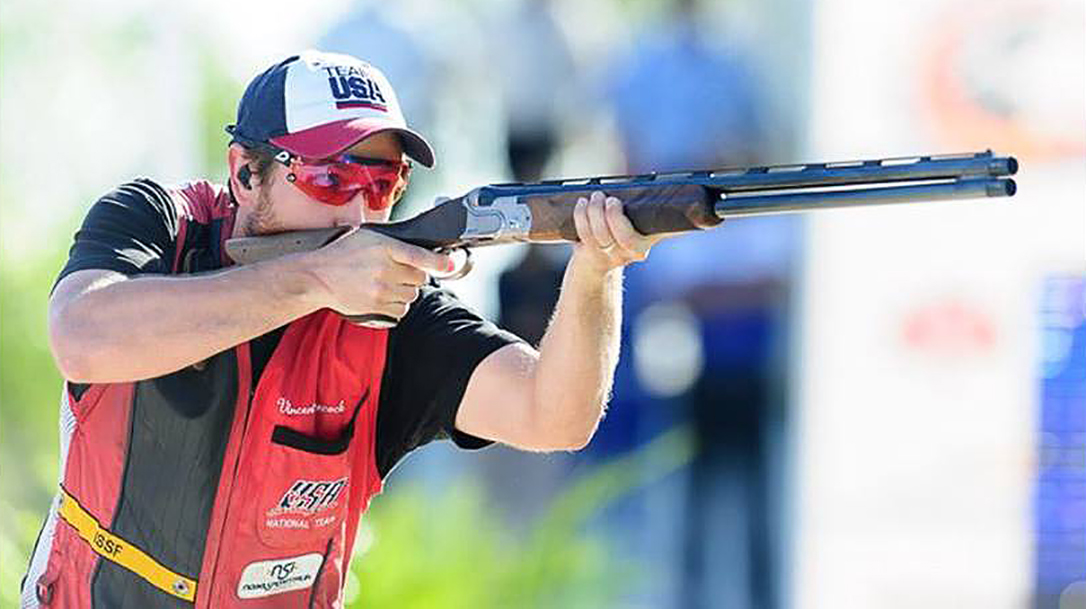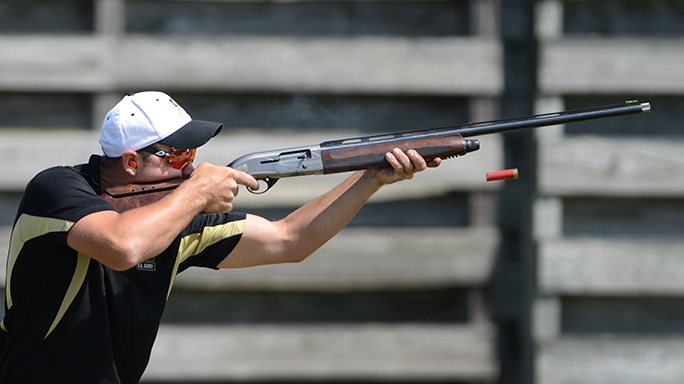The recent Summer Olympics in Paris brought a little much-needed attention to trap and skeet, two popular shotgunning competitions. For those new to guns and gun ownership, there was likely some confusion over exactly what those athletes were doing on the trap and skeet fields. Let’s explore these fun and exciting shotgun games! In this installation of Shooting 101, we’ll take a look at the three main disciplines of competitive clay pigeon shooting—trap, skeet and sporting clays.
The Shotgun Games
Trap
Trap shooting has been a sport since the late 1800s, when real pigeons were used as targets. Now, clay pigeons, sometimes just called clays, are the target of choice.
According to reports from a publication called Sporting Magazine, by the year 1793 trap shooting was well established in England. The first recorded organized trap shooting in the United States is thought to have been held at the Sportsman’s Club of Cincinatti in 1831.
Advertisement — Continue Reading Below
While there are different variations of the game, here we’ll concentrate on American Trap. In this game, targets are thrown from a single “house” forward of the shooters’ position. Shooters shoot from five stations located 16 yards behind the trap house. In singles, shooters shoot at five targets from each station, with a round consisting of 25 targets. In doubles, the machine throws two clays simultaneously for a total of 10 targets per station. Another variation, handicap trap, is similar to singles, but shooters stand farther back from the trap house.
For shotgunners, trap is a fun game to play. While many shoot trap for practice for upcoming hunting seasons, others fully embrace the sport for what it is and shoot both recreationally and competitively.

Advertisement — Continue Reading Below
Skeet
Skeet is somewhat different from trap and provides a little faster paced action and somewhat more challenging shots. A newer game shot in the United States since about 1920, skeet utilizes two trap houses—the high house on the left side of the field and the low house on the right.
Shooters move through eight shooting stations, seven of them arranged in a half-moon between the two trap houses and one directly between them. A round of skeet consists of 25 targets, with 17 shot as singles and eight as doubles. The first miss is repeated immediately and is called an option. If no targets are missed during the round, the last, or 25th target, is shot at the last station, low house 8.
At stations 1 and 2, shooters shoot a high-house single, a low-house single and a high-house/low-house pair launched simultaneously. At stations 3, 4 and 5 shooters engage a high-house single and a low-house single. Stations 6 and 7 are similar to 1 and 2 with a high-house single, a low-house single and a low-house/high-house pair. Station 8 consists of a high-house single and a low-house single.
Advertisement — Continue Reading Below
Skeet requires a little more finesse than trap because all shots are crossing shots. Consequently, leading the targets is a little more important.
Sporting Clays

Perhaps the most fun of all and the closest thing to actual field shotgunning , sporting clays utilizes a shotgun and clay targets, but it is also much different than both trap and skeet. It is the newest of the three shotgun games, and was commonly referred to as “golf with a shotgun” when it came on the American scene in the early 1980s.
Advertisement — Continue Reading Below
Unlike skeet and trap, sporting clays isn’t shot on a field with a single house as in trap or two houses as in skeet. Sporting clays is typically shot in squads of two to six people and played over a course of 10 to 15 shooting stations laid around fields or around the natural features of the land. While the typical clay target is the same as those used in skeet and trap, sporting clays also uses specialty targets to introduce the illusion of speed or distance in the eye of the shooter, moving at speeds or in the way game birds would. All can be thrown as singles or pairs.
Squads of two to six shooters start at the first station and work around the course from station to station in numerical order. Before the first person in every squad shoots, targets will be launched to familiarize the squad with what targets are being thrown and the direction in which they’ll fly so shooters can form a strategy for shooting the targets at that station. Since target setters can craft the course just about any way they want, sporting clays is a lot like Forrest Gump’s box of chocolates—you never know what you’re gonna get.
A round is complete when all shooters have shot all stations. A typical round will have shooters firing 100 rounds at the targets.
Advertisement — Continue Reading Below
Wrapping It Up
Whether you choose trap, skeet or sporting clays, shooting a shotgun is a lot of fun. It helps build hand-eye coordination and allows friends to enjoy the shooting sports together, which is what shooting is all about.
Find a place to shoot at nssf.org.























